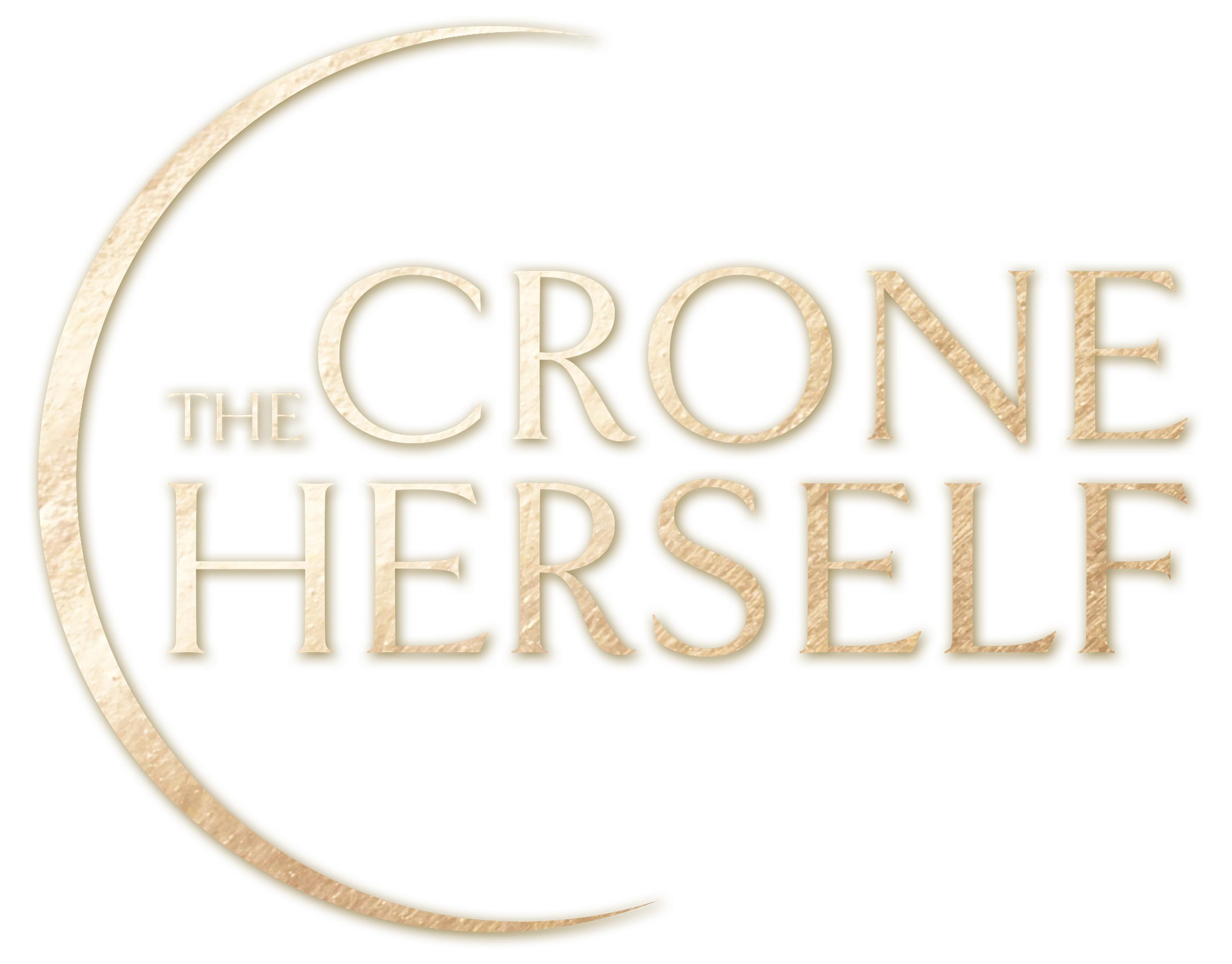WHEEL OF THE YEAR
Spring Equinox
What is Spring Equinox (Also known as Ostara)
The Crone Herself honors these old, ancestral traditions, while encouraging us to understand the land, climate, and culture we currently live in. Developing a more personalized, hyper-local, and culturally relevant approach to marking the Wheel Year’s seasonal shifts helps us celebrate in meaningful ways during intersecting global crises. We honor the ancestors and become the bridge between them and our descendants.
Symbols of Spring Equinox
The symbols associated with the Spring Equinox vary across different cultures and traditions, but some common symbols include:
Eggs: Eggs are a universal symbol of fertility and new life. Many cultures incorporate eggs into their Spring Equinox celebrations, such as decorating and hunting for Easter eggs in Christian traditions or painting and exchanging eggs in Persian New Year (Nowruz) celebrations.
Flowers: Flowers blooming in spring symbolize renewal, growth, and the awakening of nature after the winter dormancy. Flowers like daffodils, tulips, and cherry blossoms are often associated with the Spring Equinox.
Rabbits/Hares: Rabbits and hares are symbols of fertility and abundance. This association likely stems from their prolific breeding habits, making them a common motif in springtime celebrations.
Chicks: Baby birds and chicks are often depicted during springtime, representing new beginnings and the emergence of life.
Seeds and Sprouts: The planting of seeds and the emergence of sprouts symbolize the beginning of the agricultural cycle, growth, and potential.
Sun: The Spring Equinox marks the point in the Earth’s orbit where the length of day and night are approximately equal, symbolizing balance and the return of longer daylight hours. The sun is often depicted as a symbol of warmth, light, and life.
Greenery: Greenery represents the return of vegetation and the lushness of springtime. It signifies hope, vitality, and the rejuvenation of the Earth.
Butterflies: Butterflies are symbols of transformation and metamorphosis. Their emergence from cocoons aligns with the theme of renewal and new beginnings during the Spring Equinox.
These symbols are often used in rituals, decorations, and festivities associated with the Spring Equinox across various cultures and traditions.
Colors of Spring Equinox
The colors associated with the Spring Equinox typically reflect the vibrant and awakening characteristics of the season. Some common colors associated with the Spring Equinox include:
Pastels: Soft pastel colors such as pale pink, light blue, soft yellow, and mint green are commonly associated with spring. These colors evoke a sense of freshness, renewal, and blooming flowers.
Green: Green is the dominant color of spring, representing the return of vegetation, growth, and vitality. It symbolizes rebirth, rejuvenation, and the awakening of nature after the winter months.
Yellow: Yellow is often associated with springtime as it reflects the bright sunshine and the blooming of daffodils and other spring flowers. It symbolizes warmth, optimism, and new beginnings.
Light Blue: Light blue skies are a common sight in spring, symbolizing clarity, tranquility, and the promise of warmer weather. This color is often associated with feelings of serenity and peace.
Lavender: Lavender is a soothing color associated with relaxation and balance. It reflects the delicate beauty of spring flowers like lilacs and represents harmony and inner peace.
White: White symbolizes purity, cleanliness, and the blank canvas of new beginnings. It is often associated with the purity of newly fallen snow melting away and the blossoming of white flowers like cherry blossoms.
Coral: Coral is a warm and vibrant color associated with energy, enthusiasm, and creativity. It reflects the lively spirit of springtime and the burst of color that emerges as flowers bloom.
These colors are often incorporated into decorations, clothing, and celebrations during the Spring Equinox to evoke the essence of the season and celebrate its themes of renewal, growth, and rejuvenation.
Spring Equinox Traditions
Traditions and ceremonies associated with the Spring Equinox vary widely across different cultures and regions. Here are some notable ones:
Ostara: Ostara is a modern Pagan celebration that honors the Spring Equinox. It draws inspiration from Germanic paganism and celebrates the balance between light and dark as the days become longer. Rituals may involve decorating eggs, planting seeds, and lighting fires to welcome the sun’s return.
Nowruz (Persian New Year): Nowruz, which translates to “New Day,” is celebrated by millions of people worldwide, particularly in Iran and Central Asia. It marks the beginning of the Persian New Year and the arrival of spring. Traditions include the cleaning of homes (khaneh tekani), family gatherings, the setting of a ceremonial table (haft-seen) with seven symbolic items beginning with the Persian letter “S,” and the exchange of gifts.
Holi: Holi, also known as the Festival of Colors, is a Hindu festival celebrated predominantly in India and Nepal. It typically falls around the time of the Spring Equinox and is a joyous occasion marked by vibrant colors, music, dance, and the throwing of colored powders and water. Holi celebrates the victory of good over evil and the arrival of spring.
Easter: Easter is a Christian holiday that celebrates the resurrection of Jesus Christ. It often coincides with the Spring Equinox, and traditions associated with Easter include attending church services, Easter egg hunts, decorating eggs, and feasting with family and friends.
Chunfen (Spring Equinox) in China: Chunfen is one of the 24 solar terms in the traditional Chinese calendar and marks the midpoint of spring. Traditionally, people in China may observe ceremonies honoring their ancestors, visit ancestral graves, and enjoy outdoor activities like picnics and kite flying.
Japanese Cherry Blossom Festivals: In Japan, the arrival of cherry blossoms (sakura) heralds the beginning of spring. Hanami (flower viewing) festivals are held throughout the country, where people gather under cherry blossom trees to appreciate their beauty, have picnics, and celebrate the fleeting nature of life.
Mayan Equinox Celebrations: In Mayan culture, the Spring Equinox is a significant astronomical event. At the ancient site of Chichen Itza in Mexico, thousands gather to witness the descent of the sun’s shadow, which creates the illusion of a serpent descending down the steps of the El Castillo pyramid.
These are just a few examples of the diverse traditions and ceremonies associated with the Spring Equinox around the world. Each culture brings its own unique customs and rituals to celebrate the arrival of spring and the renewal of life.
Meditations for Spring Equinox
Seeds & Planting As you push tiny seedlings into soil, meditate on the garden of your life. Just as these seeds will one day bear leaf, bud, blossom, and fruit, imagine your seed dreams coming to fruition. As you tend your seeds and garden, remember to the garden of your life.
Emergence In the weeks leading up to, and after Spring Equinox, focus on emerging energy and rapid growth: Increasing solar light, the warming temperature, the newborn animals and newly hatched birds, tiny shoots from plantlife, rushing river water from upstream rain and snow melt. What is emerging in your life?
Balance The Equinox is the moment of balance between night and day. It’s the end of winter and the start of spring. Meditate with the concept and reality of balance. Where do you seek balance in your life?
Spiritual Cleansing It’s almost innate to do spring cleaning as the weather warms up. We want to clear stuck energy, and let in fresh air! Engaging with practices of personal cleansing, clearing and renewal are equally important.
Spring Equinox Recipes
Nettle Tea
Put two cups of dry nettle leaf in a pan with two cups water. Bring just to the start of boiling. Remove from heat and allow to steep for five minutes. Strain into your cup. Sweeten with sugar, honey, or maple syrup if you like.
One cup of Nettle Tea per day helps cleanse the kidneys and liver — an especially good practice after a typically heavier winter diet. It helds reduce blood glucose levels, reduces inflammatory pain, and is filled with antioxidants. A perfect cleanse for your body,
You can purchase dried nettle leaf. Or, you can forage for it, or grow it in your herb garden.
Leek Quiche
Preheat oven to 400 F
1 frozen or premade pie crust
3 eggs
2 tbs butter
1c milk or half&half
1.5 c grated swiss or gruyere cheese–ro combination of the two
2 medium leeks
1/2 tsp salt
1/4 tsp pepper
1/8 tsp nutmeg
1/2 tbs flour
In a bowl, whisk together eggs, milk/half & half, flour, salt, pepper and nutmeg
Cut dark green stalks, and root ends from leeks. Slice in half, lengthwise, then rinse well under cold water.
Rough chop into 1/4-1/2″ pieces.
Melt butter over medium-high heat in skillet on stove-top.
Add leeks and saute 8 minutes, stirring often. Do not allow them to brown.
Spread leeks in bottom of pie crust.
Sprinkle cheese(s) over the leeks.
Pour the egg mixture over all.
Bake in oven 30 minutes, or until knife inserted in center comes out clean.
Remove and let rest and cool for 15 minutes before serving.
Serve alongside a green salad or spring soup.
Roasted Asparagus
1 lb fresh, green asparagus with pencil-thick stalks
6 slices prosciutto (you can substitute bacon or ham)
6 slices provolone cheese
Olive oil
1/2 tsp garlic powder
salt & pepper
Preheat oven to 400 F
Rinse asparagus in cold water.
Cut off woody stems, leaving tips and 3-4″ of stem
Divide asparagus stalks into six even piles
Roll a slice of cheese and prosciutto around each pile.
Place on baking sheet
Generously douse in olive oil, then sprinkle with salt, pepper, and garlic powder.
Bake for 12 minutes. Remove from oven and turn your rolled asparagus bundles over. Return to oven and cook another 10 minutes.
Serve as a main dish, or alongside salad and protein of your choice.

